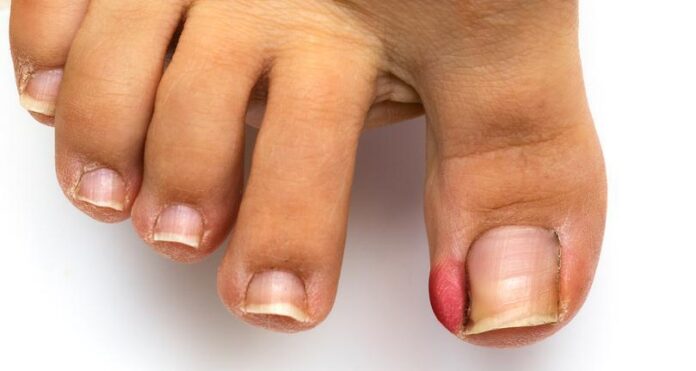Ingrown toenails affect millions of people in the United States, causing discomfort and potential complications if left untreated. This condition occurs when the edge of a toenail grows into the surrounding skin tissue. Understanding the causes, recognizing symptoms, and implementing prevention strategies can help you maintain healthy feet and avoid painful complications.
What Are Ingrown Toenails?
An ingrown toenail develops when the nail edge penetrates the soft tissue surrounding the nail bed. This condition most commonly affects the big toe, though it can occur on any toe. The nail grows into the skin rather than over it, creating a wound that can become infected if not properly managed.
Ingrown toenails can range from mild irritation to severe infection. Early recognition and treatment prevent complications such as cellulitis or abscess formation. In severe cases, surgical intervention may be necessary to remove the problematic nail section.
What Causes Them?
Several factors contribute to the development of ingrown toenails, with improper nail trimming being the most common cause. Cutting nails too short or rounding the corners encourages the nail to grow into the surrounding skin tissue. Tight-fitting shoes create pressure on the toes, forcing the nail into the skin. High heels and narrow-toed shoes particularly contribute to this problem.
Genetic factors play a role in nail shape and growth patterns. Some individuals inherit curved or thick nails that are more prone to becoming ingrown. Trauma to the toe, such as stubbing or dropping objects on the foot, can damage the nail and alter its growth direction. Certain medical conditions increase the risk of developing this condition, including diabetes, peripheral vascular disease, and fungal infections.
What Are the Symptoms?
The initial symptoms of an ingrown toenail include pain along the side of the nail, and the affected area may appear red and swollen. Walking or wearing shoes can intensify the discomfort, particularly when pressure is applied to the affected toe. As the condition progresses, the skin around the nail may become increasingly inflamed. The tissue may appear puffy and feel warm to the touch.
Signs of infection include increased redness, warmth, and swelling around the nail. Pus or drainage from the affected area indicates bacterial infection. The skin may develop a foul odor, and red streaks extending from the toe suggest the infection is spreading.
How Can You Prevent Them?
Proper nail trimming techniques form the foundation of ingrown toenail prevention. Cut toenails straight across rather than following the curve of the toe. Leave the nails slightly longer than the tip of the toe to prevent the corners from growing into the skin.
Footwear selection plays a valuable role in prevention. Choose shoes with adequate toe room and avoid tight-fitting or narrow shoes. Maintaining good foot hygiene is also beneficial, which includes washing the feet daily and keeping them dry. Regularly change your socks and opt for moisture-wicking materials when engaging in athletic activities.
Protect your feet from trauma by wearing appropriate footwear for different activities, and avoid walking barefoot in areas where foot injuries are likely. Regular foot inspections by a podiatrist help identify problems early. Address minor issues promptly before they develop into more serious problems.
Learn More About Proper Nail Care
Ingrown toenails are a preventable condition that can cause significant discomfort and complications if left untreated. Understanding the causes and symptoms allows for early recognition and appropriate treatment. Proper nail trimming, appropriate footwear, and good foot hygiene form the cornerstone of prevention. Contact a podiatrist to schedule a consultation and learn more about comprehensive foot care strategies.

